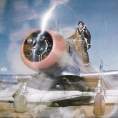Does The Mooney Wing Tank Hide Water?
-
Members Online
- Oklahoma Mooney
- Red Leader
- Utah20Gflyer
- Derrickearly
- Rmfriday
- 802flyer
- M20S Driver
- exM20K
- Aerospace
- laytonl
- Brad B
- Austintatious
- Shadrach
- 201Steve
- takair
- good2eat
- richardbrochu27
- Midwestmooniac
- natdm
- redbaron1982
- Joe Linnebur
- Sabremech
- kowabunga
- N2391Y
- EKoS
- varlajo
- Fly Boomer
- warren.huisman
- Mooney-Shiner
- Aerodon
- bradp
- MikeOH
- Glen Davis
- 00-Negative
- BravoWhiskey
- clh
- Ned Gravel
- BrettV
- rturbett
- McMooney
- Woodpile
- amillet
- PT20J
- Chris newton
- Scott Ashton


Recommended Posts
Join the conversation
You can post now and register later. If you have an account, sign in now to post with your account.